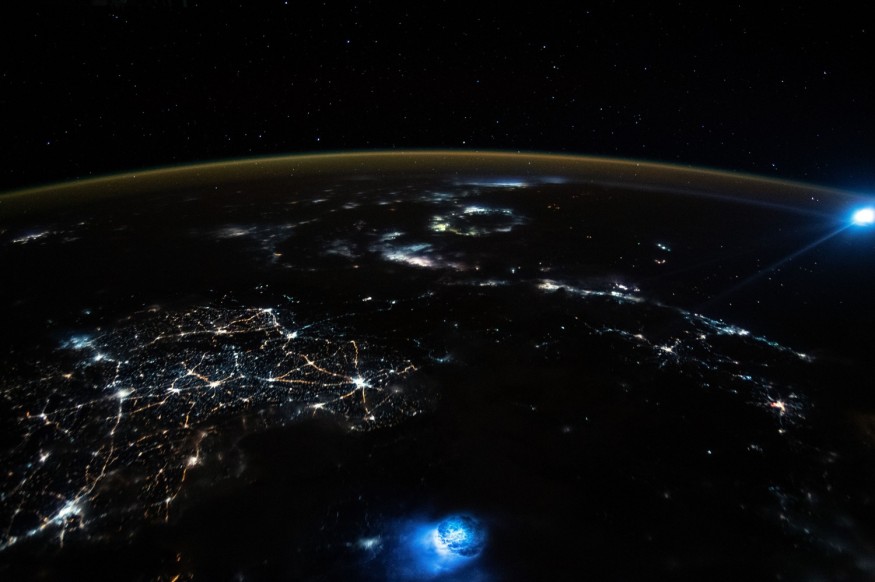The International Space Station (ISS) was passing over Southeast Asia when an astronaut snapped a peculiar image of Earth from space. The photo shows two bizarre blue orbs of light glimmering from the atmosphere that looks otherworldly.
NASA's Earth Observatory released the photo online on October 9 but it was photographed on October 2021 by an unnamed member of the Expedition 66 crew.

Mysterious Blue Orbs in Earth's Atmosphere
The photo shows Earth at night as the orbiting laboratory passes over Southeast Asia. It also shows two blue orbs of light, wherein one was over the Gulf of Thailand and the other far on the horizon near the South China Sea. Despite their mysterious appearance, these two blobs of light are the result of two natural phenomena.
The Gulf of Thailand's light is due to a lightning storm, which is usually covered with clouds that it is not visible from the ISS. But the one in the photograph was visible through a gap in the clouds, which caused the lightning to illuminate the surrounding walls of the caldera-like cloud and created a striking luminous ring.
Tero Mielonen, a senior scientist at the Atmospheric Research Center of Eastern Finland of the Finnish Meteorological Institute, told Newsweek that there were also lightning strikes that do not reach the ground and remained within the cloud although sometimes they have visible channels that extend out into the air around and above the cloud.
Meanwhile, the second mysterious blue orb in the picture is the light of the Moon viewed through the Earth's atmosphere. The scattering effect is also the reason that the daytime sky appears blue hat causing the moonlight to appear the same color as the lightning storm occurring over Thailand.
Colors of Visible Light Affected by their Interaction With Atmospheric Particles
According to Live Science, the orientation of the Moon in relation to the ISS affects how the light is reflected from the Sun as it passes through the planet's atmosphere and made it look like a bright blue orb with a fuzzy halo.
Different colors of visible light have different wavelengths that affect their interaction with atmospheric particles. Since blue light has the shortest wavelength, it is more likely to scatter, which caused the Moon to turn blue in the picture. It is the same principle as why the sky is blue during the daytime.
The photo also shows artificial lights from Thailand, Hanoi in Vietnam, and Hainan Island in the southernmost region of China despite being mostly obscured by clouds.
Transient Luminous Events in the Atmosphere Visible in the ISS
Aside from lightning strikes, Newsweek reports that thunderstorms can also produce other kinds of electrical phenomena known as transient luminous events that appear high in the sky and are also visible from space.
Mielonen told the news outlet that the most common ones are sprites that appear directly above active thunderstorms and happen at the same time as cloud-to-ground lightning. They were recently photographed at La Silla Observatory in Atacama Desert, Chile.
This rare form of red lightning could extend up to 100 kilometers from the cloud top and are not easy to see by the eye. It also has blue jets from the cloud top that form narrow cones that fan out and disappear around 50 kilometers altitude.
Moreover, there are rapidly expanding disk-shaped regions of glowing light called elves that can be up to 5000 kilometers across. Like sprites, they can also appear above areas of cloud-to-ground lightning, although they only exist for less than a thousandth of a second.
Check out more news and information on Space in Science Times.
© 2025 ScienceTimes.com All rights reserved. Do not reproduce without permission. The window to the world of Science Times.












